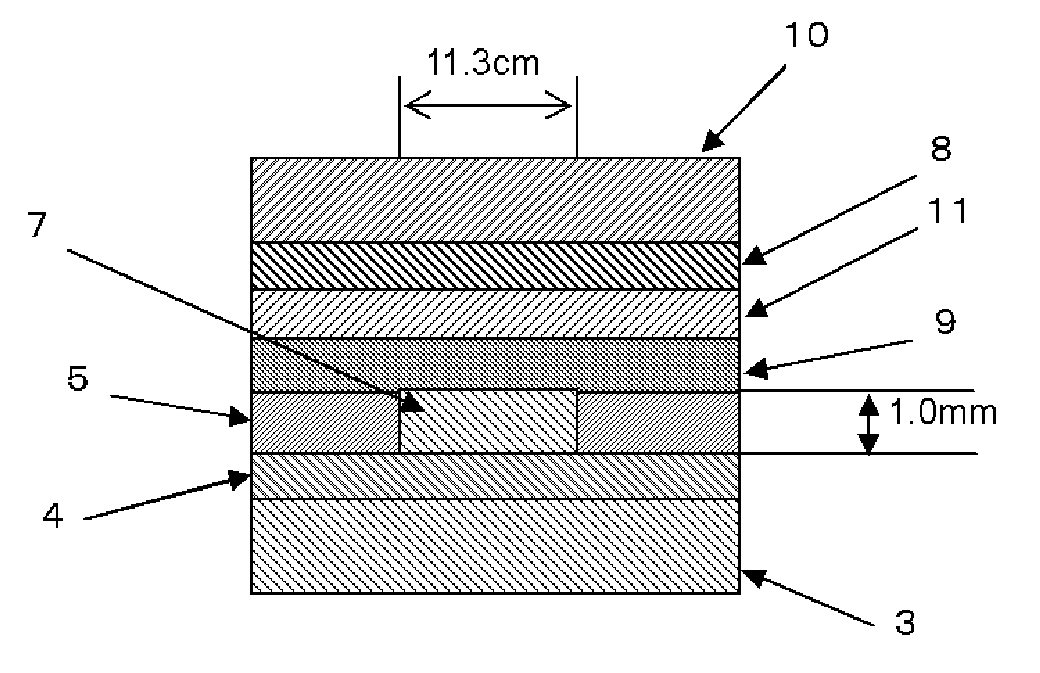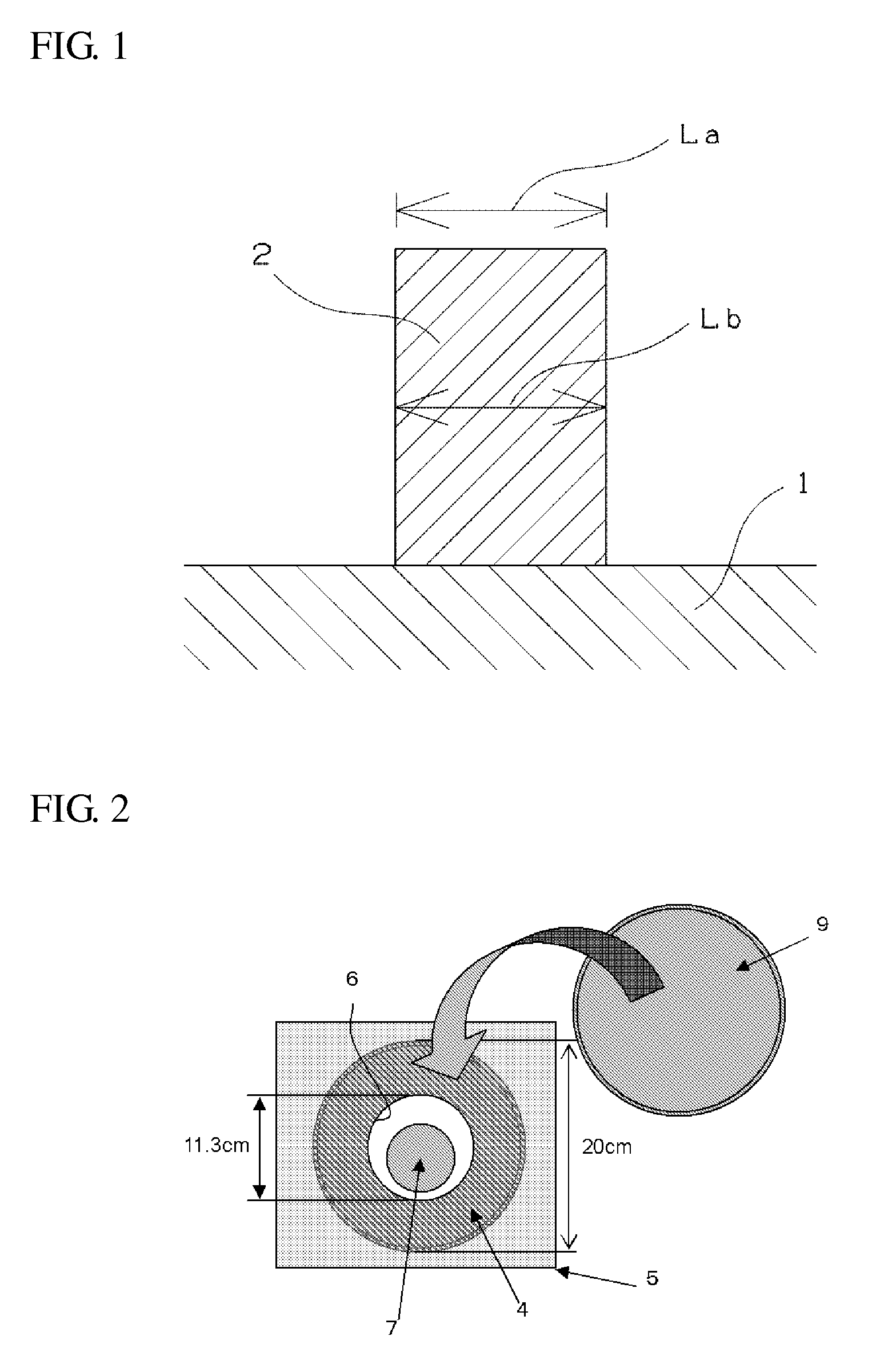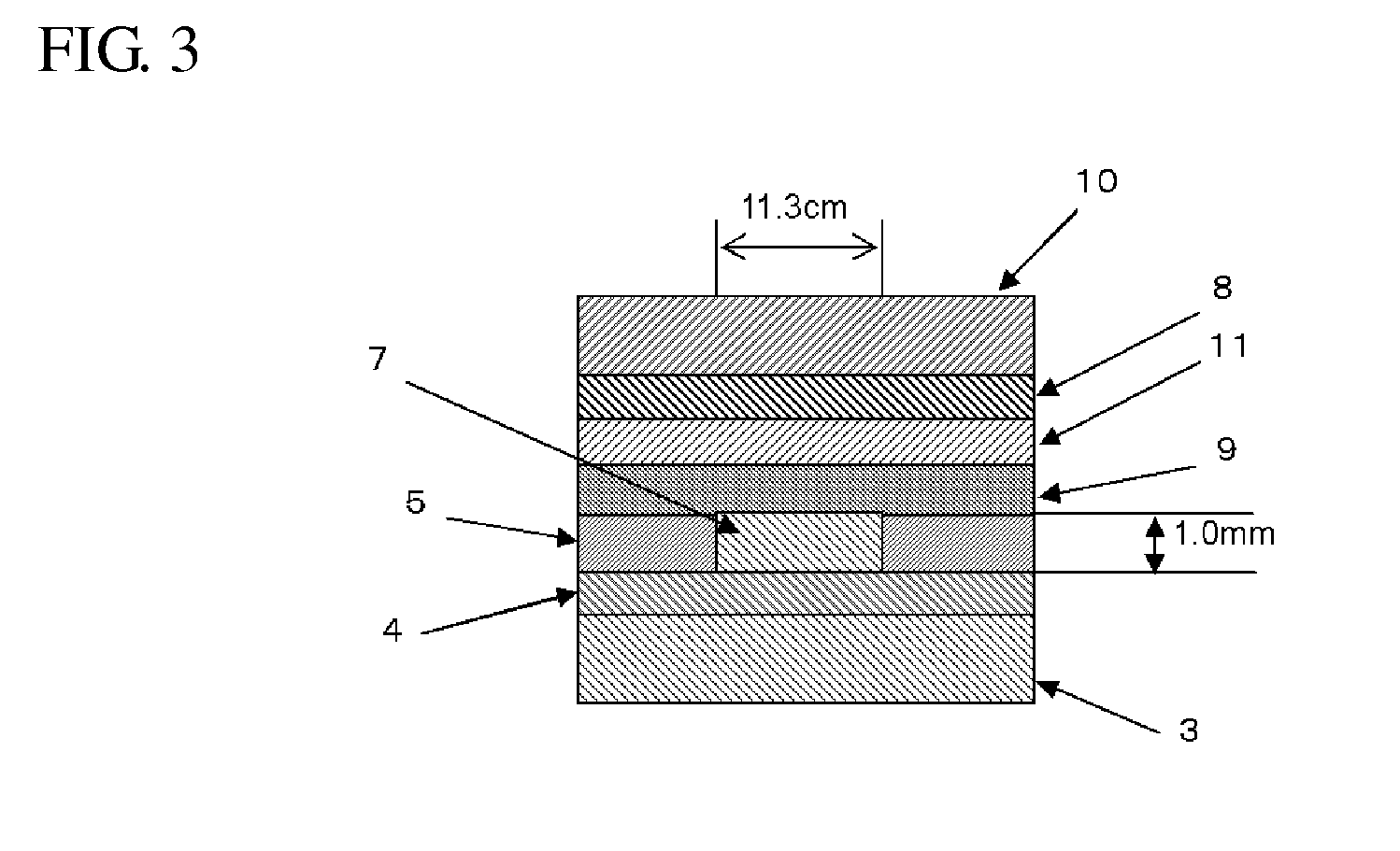Composition for forming upper layer film for immersion exposure, upper layer film for immersion exposure, and method of forming photoresist pattern
- Summary
- Abstract
- Description
- Claims
- Application Information
AI Technical Summary
Benefits of technology
Problems solved by technology
Method used
Image
Examples
synthesis example 1
[0118]A monomer solution was prepared by dissolving 53.93 g (50% by mol) of a compound for forming the following repeating unit (M-1), 35.38 g (40% by mol) of a compound for forming the following repeating unit (M-2), and 10.69 g (10% by mol) of a compound for forming the following repeating unit (M-3) in 200 g of 2-butanone, and further adding 5.58 g of dimethyl-2,2′-azobis(2-methylpropionate). On the other hand, a 500 ml three-necked flask equipped with a thermometer and a dropping funnel was charged with 100 g of 2-butanone and purged with nitrogen gas for 30 minutes. After nitrogen purge, the content in the flask was heated to a temperature of 80° C. under stirring with a magnetic stirrer. The previously prepared monomer solution was added into the flask using a dropping funnel over three hours. The polymerization reaction was carried out for six hours after initiation of dropping. After the termination of the polymerization, the polymer solution was cooled with water to a tempe...
synthesis example 2
[0123]A monomer solution was prepared by dissolving 47.54 g (46% by mol) of a compound for forming the following repeating unit (M-1), 12.53 g (15% by mol) of a compound for forming the following repeating unit (M-2), and 39.93 g (39% by mol) of a compound for forming the following repeating unit (M-4) in 200 g of 2-butanone, and further adding 4.08 g of 2,2′-azobis(isobutylonitrile). On the other hand, a 1,000 ml three-necked flask equipped with a thermometer and a dropping funnel was charged with 100 g of 2-butanone and purged with nitrogen gas for 30 minutes. After nitrogen purge, the content in the flask was heated to a temperature of 80° C. under stirring with a magnetic stirrer. The previously prepared monomer solution was added into the flask using a dropping funnel over three hours. The polymerization reaction was carried out for six hours after initiation of dropping. After the termination of the polymerization, the polymer solution was cooled with water to a temperature of...
synthesis example 3
[0125]A monomer solution was prepared by dissolving 55.44 g (50% by mol) of a compound for forming the following repeating unit (M-1), 33.57 g (40% by mol) of a compound for forming the following repeating unit (M-5), and 10.99 g (10% by mol) of a compound for forming the following repeating unit (M-3) in 200 g of 2-butanone, and further adding 5.74 g of dimethyl-2,2′-azobis(2-methylpropionate). A 500 ml three-necked flask equipped with a thermometer and a dropping funnel was charged with 100 g of 2-butanone and purged with nitrogen gas for 30 minutes. After nitrogen purge, the content in the flask was heated to a temperature of 80° C. under stirring with a magnetic stirrer. The previously prepared monomer solution was added into the flask using a dropping funnel over three hours. The polymerization reaction was carried out for six hours after initiation of dropping. After the termination of the polymerization, the polymer solution was cooled with water to a temperature of 30° C. or...
PUM
| Property | Measurement | Unit |
|---|---|---|
| Percent by mass | aaaaa | aaaaa |
| Percent by mass | aaaaa | aaaaa |
| Angle | aaaaa | aaaaa |
Abstract
Description
Claims
Application Information
 Login to View More
Login to View More - R&D
- Intellectual Property
- Life Sciences
- Materials
- Tech Scout
- Unparalleled Data Quality
- Higher Quality Content
- 60% Fewer Hallucinations
Browse by: Latest US Patents, China's latest patents, Technical Efficacy Thesaurus, Application Domain, Technology Topic, Popular Technical Reports.
© 2025 PatSnap. All rights reserved.Legal|Privacy policy|Modern Slavery Act Transparency Statement|Sitemap|About US| Contact US: help@patsnap.com



